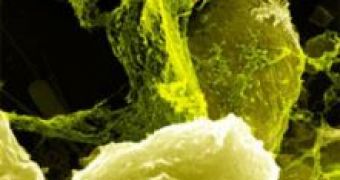You will be surprised to find out that suicidal can be good for your body.
I'm not talking about hanging or stuff like that ...
It's about immunity.
Your body produces several million neutrophils (a type of white cells) per minute, in the bone marrow, and they are ready to defend the body of invading germs once in the blood stream.
These cells represent the immune system's first line of defense against harmful bacteria that entered the body and migrated into the tissue at the site of infection or wound to destroy the germs.
People have thought till recently that neutrophil granulocytes, the largest type of white cells, kill bacteria with antimicrobial enzymes and after that eat them very efficiently.
But now researchers at the Max-Planck-Institute for Infectious Biology in Berlin, Germany, have discovered that neutrophils capture and kill microbes with extracellular structures nicknamed Neutrophil Extracellular Traps (NETs) that are made of nucleic acid and aggressive enzymes.
The team led by Arturo Zychlinsky investigated how neutrophil granulocytes can form this snaring web-like structures outside the cells. The researchers could generate impressive micrographs of these nets. It was an enigma how the granulocytes could mobilize the contents of their nuclei and expel it out of the cells.
The answer came only after lengthy live cell imaging and biochemical studies. The cells are sensitive to the presence of bacteria which activate them and modify the structure of their nuclei and granules, small enzyme deposits in the cytoplasm. Once the mechanism is activated, the cells undergo a novel program leading to their death. "The nuclear membrane disintegrates, the granules dissolve, and thus the NET components can mingle inside the cells", explains Volker Brinkmann, head of the microscopy group.
At the end of the suicidal process, the cell contracts until the cell membrane bursts open and quickly releases the highly active melange, containing their nucleus content. Outside the cell, the mixture unfolds and forms the NETs, which capture bacteria and pathogenic fungi. The nucleic acid, mixed with bactericidal enzymes, is a lethal cocktail for them. "NETs formed by dying granulocytes kill as many bacteria as are eaten up by living blood cells", said Zychlinsky.
Photo credit: Dr. Volker Brinkmann, Max Planck Institute for Infection Biology. Neutrophill with a trapped Shigella bacterium

 14 DAY TRIAL //
14 DAY TRIAL //